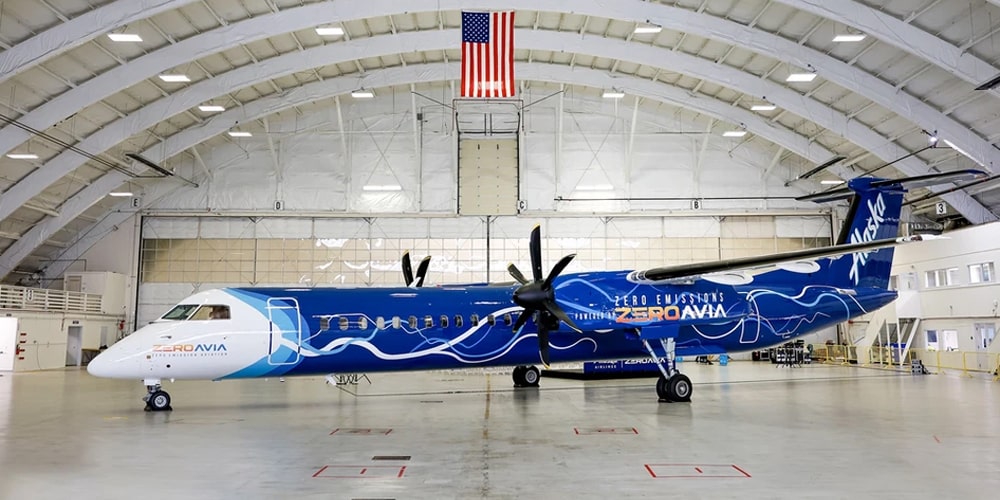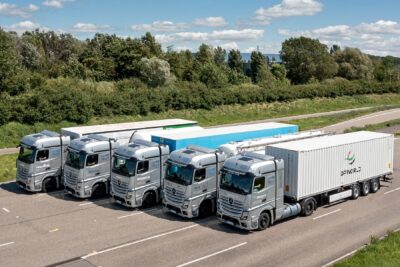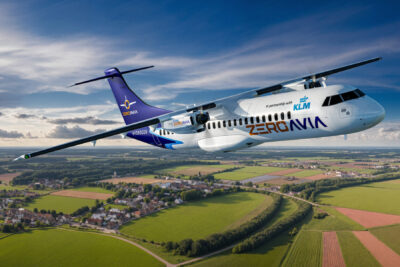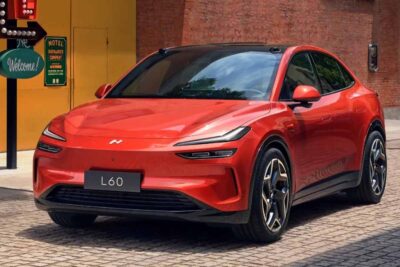ZeroAvia works on world’s largest zero-emission aircraft
ZeroAvia has started developing the world’s largest zero-emission aircraft based on a decommissioned ‘Dash 8’ jet Alaska Airlines reserved for conversion. Should the hydrogen plane take off, it would be about five times more powerful than anything out there so far, the companies say.
The aircraft is a 76-seat Bombardier Q400 turboprop plane that ZeroAvia will equip with a hydrogen-electric propulsion system. The Bombardier aircraft, also known as said “Dash 8”, was a regional aircraft launched in 1998 and widely used in Europe. The jet seats 76 passengers in this case.
Alaska Airlines invested in ZeroAvia in 2021 and announced the joint development of the said regional aircraft. Now the aircraft to be converted has been officially handed over to ZeroAvia.
When the aircraft with ZeroAvia’s fuel cell propulsion is to take off again and how far it is to fly is not stated in the current announcement. However, when announcing the partnership in 2021, ZeroAvia and Alaska Airlines set out to scale the company’s system to said ZA2000 to a 500-mile range and power between 2,000 and 5,000 kilowatts. ZeroAvia added at the time, they would work closely with aircraft regulators during this project and set up a location in the Seattle area to support this initiative.
ZeroAvia announced the new system at the end of April: while the previous test aircraft still ran on gaseous hydrogen, the modular ZA2000 powertrain for aircraft with 40-80 seats (i.e., the Dash 8) will require liquid hydrogen. According to the information at the time, the ZA2000 engine is to be completed in 2027 – so the Bombardier is unlikely to fly any earlier.
Still, “Demonstrating this size of aircraft in flight, powered entirely by novel propulsion, would have been unthinkable a few years ago,” said Val Miftakhov, CEO of ZeroAvia. “Launching this program puts us on track for a test flight next year and accelerates our progress toward the future of zero-emission flight for Alaska Airlines and for the world at large.”
Should the project succeed, Alaska also secured options for converting up to 50 regional aircraft to hydrogen-electric power through ZeroAvia’s powertrain, starting with the Q400.
ZeroAvia also showcased its HyperCore electric motor technology at the hand-over, which is expected to pave the way for hydrogen-electric propulsion systems like the Q400. The 1.8 MW prototype ZeroAvia is currently testing consists of two HyperCore modules, each rated at 900 kW. According to ZeroAvia, the modular HyperCore design enables engines with up to 5.4 MW of power.
In January, ZeroAvia completed the maiden flight of a 19-seater Dornier 228 converted to hydrogen fuel cell propulsion called HyFler II. ZeroAvia has been working on Project HyFlyer II since 2021.






0 Comments